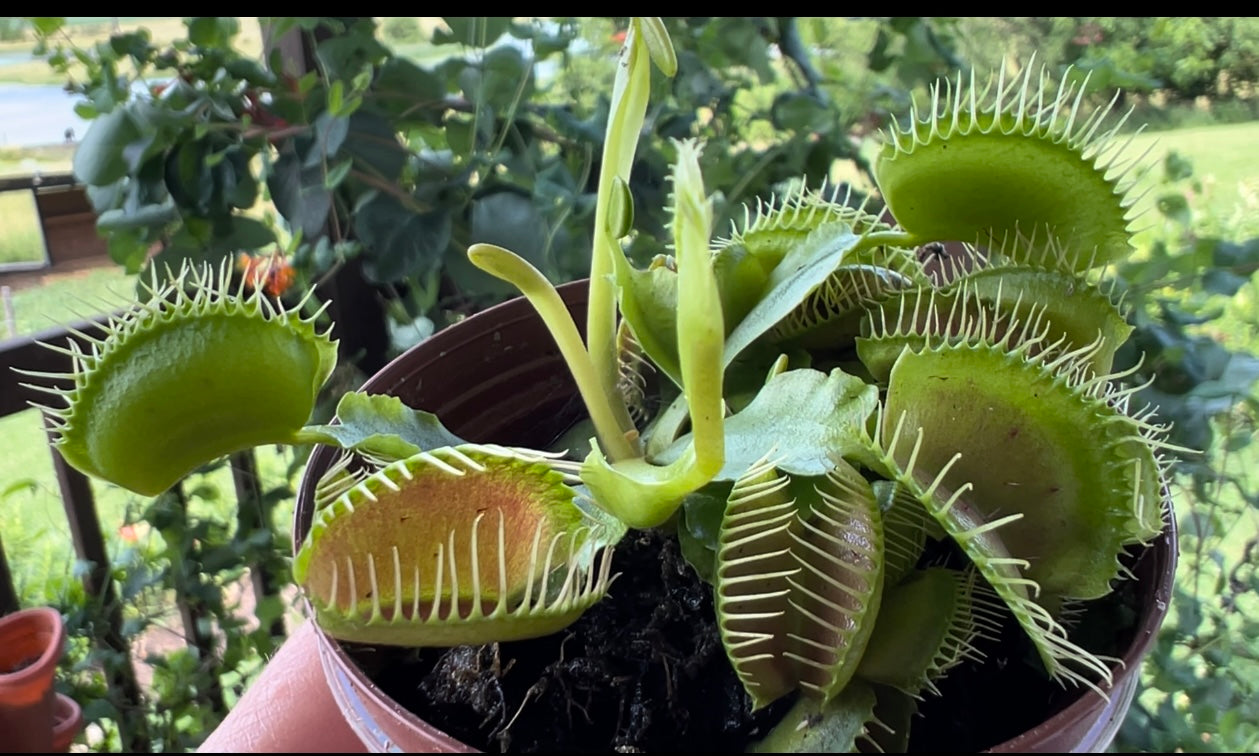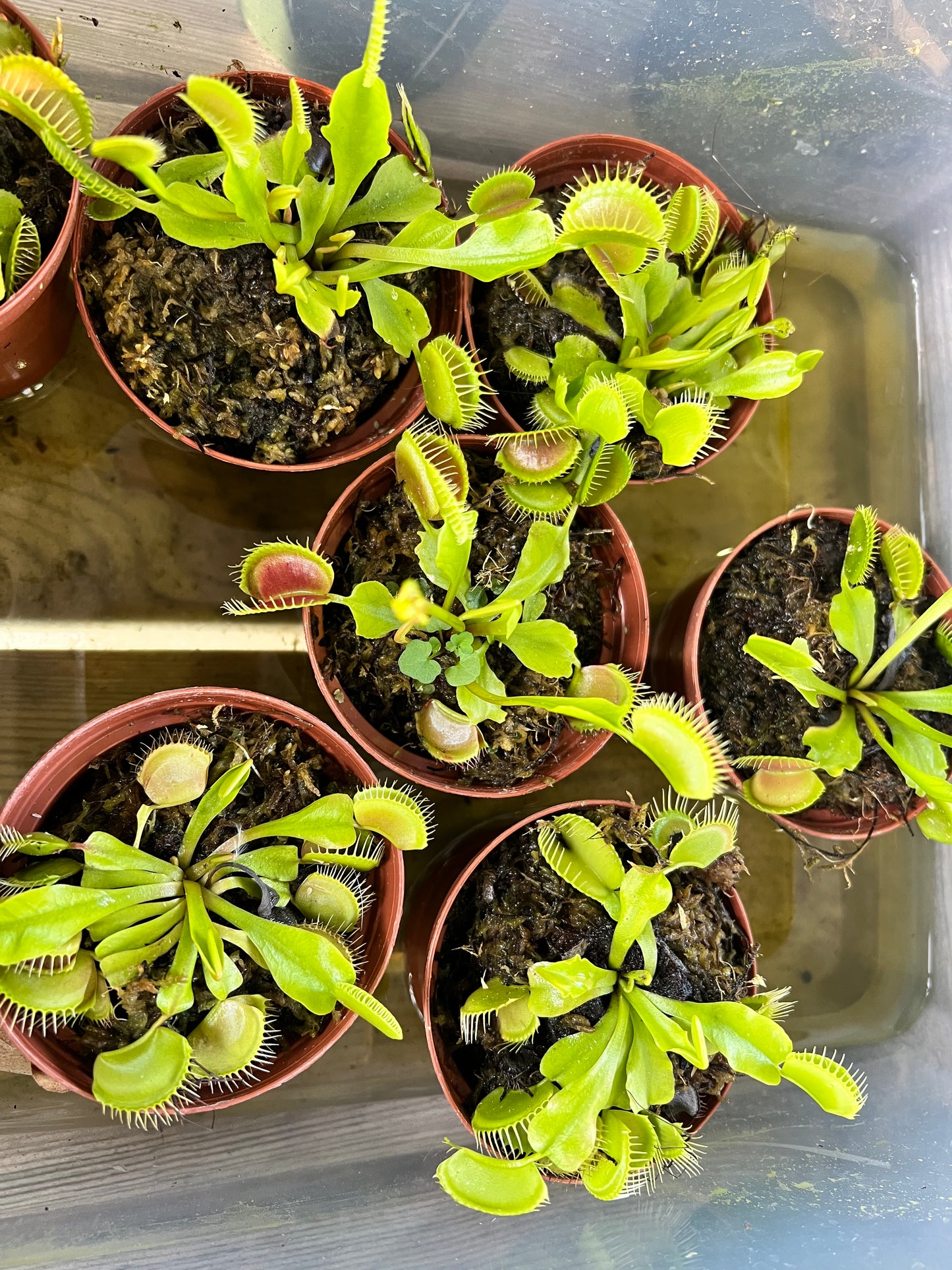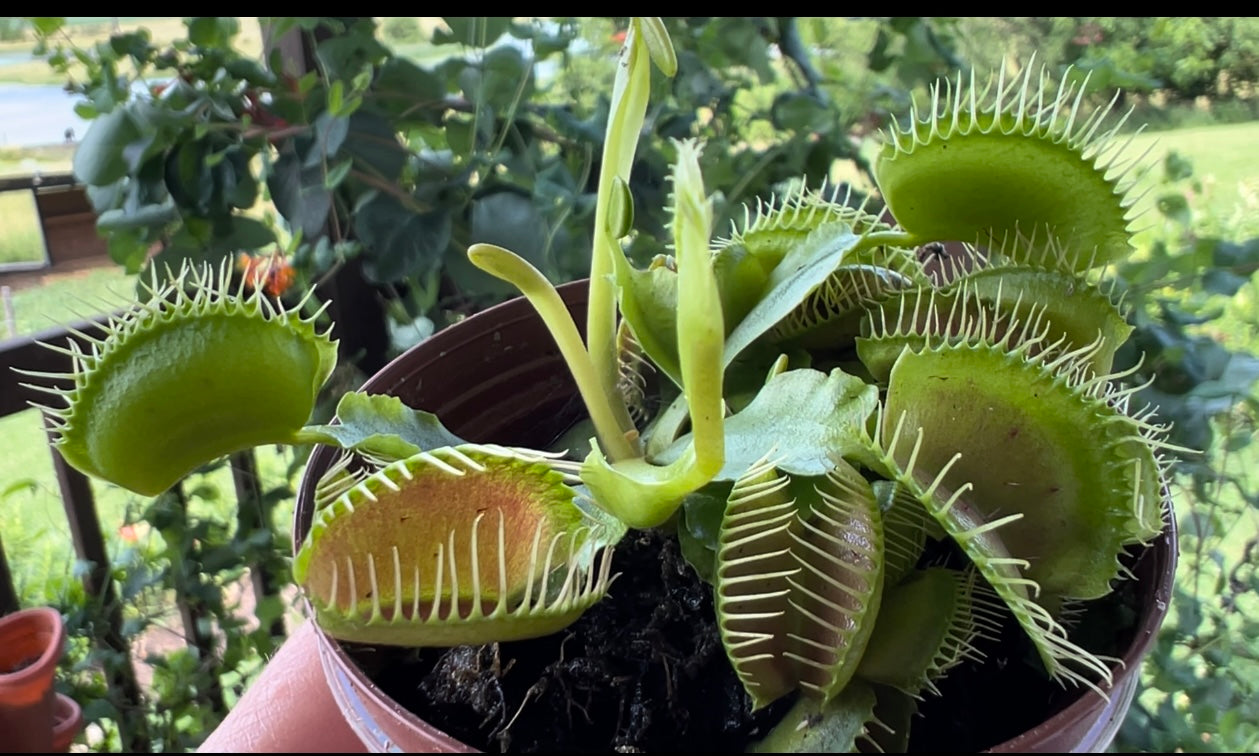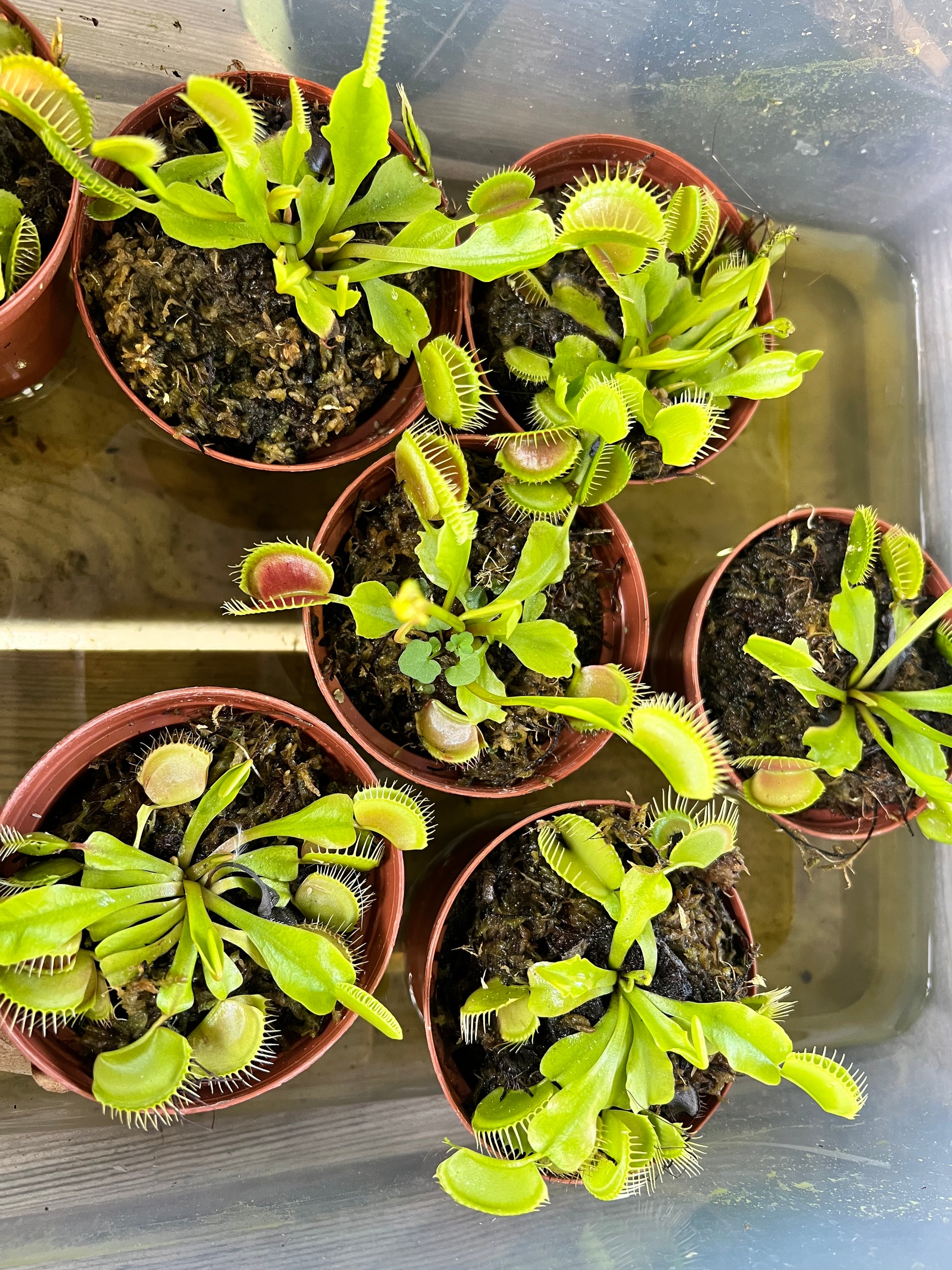The Rooted Plant Shop
Venus Fly Trap
Venus Fly Trap
Couldn't load pickup availability
The Venus fly trap (Dionaea muscipula) is a perennial carnivorous plant, a member of the sundew family well known for consuming small insects. People grow it in part because of its unique and eye-catching look, but mostly because of what it does.
Notoriously difficult to care for, these fickle moisture-lovers can still thrive in your home with the proper knowledge and care.
The "trap" of a Venus fly trap is actually a modified leaf. A plant can have as many as eight of them arising from flat stems (technically part of the leaf) around a basal rosette. This leaf/trap consists of two lip-like lobes united by a hinge. Nectar within the trap is the bait that draws an insect in to its death. Once inside, if the insect makes contact with one of the trigger hairs, the trap is sprung: It closes, shutting up the prey inside. After digestion, the "jaws" reopen.
The Venus fly traps are best grown indoors as an indoor potted houseplant, where it will be more convenient for you to study its strange behavior. It is no harder to care for than many other houseplants, but it does require specific conditions.
Venus fly traps should be placed in a location where it will receive 12 hours of light daily during the growing season from spring to fall. Aim for at least 4 hours of this to be bright, direct sunlight. It is better to water Venus fly trap with rainwater than tap water.
Set up a rain barrel or leave a container outdoors to collect the rainwater. In the absence of rainwater, use distilled water. Avoid watering from the top of the pot and opt to place your Venus fly trap's pot into a small dish of this water, about 1 cm deep per watering.
Do not fertilize Venus fly traps, as they perform best in soil that is low in nutrients just like its native bog environment. Venus fly traps get all of their necessary nutrition from sunlight and from insects they consume, and fertilizers will be too harsh and loaded with chemicals for these delicate plants.
Venus fly traps prefer warm temperatures between 70 and 95 degrees Fahrenheit, but can survive temperatures as low as 40 degrees if properly protected. They also prefer humid environments with good air flow, so consider using a humidifier in your space, and running a small fan to keep air moving
If you live in a location with warm temperatures year-round and are able to grow your Venus fly trap outside, it will catch enough insects to feed itself. When grown indoors, as is more common, you may need to provide it with some meals. However, Venus fly traps won't consume insects until they're healthy and have all of their needs met, so focus first on creating the right growing conditions for a healthy plant.
Once your plant is healthy, you can occasionally provide it with dead or live insects. After gently dropping an insect into the open trap, you'll need to stimulate the trigger hairs to ensure healthy digestion. You can do so using a finger or gently with a toothpick or other tool. Blood worms can also be supplemented.
Because Venus fly traps can be fickle about their growing conditions, it's essential to know how best to plant them, the type of soil they need, and how often you should be repotting them to keep them thriving. Using more traditional houseplant soils or planting methods can cause your Venus fly trap to die.
Venus fly traps thrive in wet, acidic, nutrient-poor soil. You can create that indoors with a 1:1 mixture of peat moss and perlite. A combination of soil mix with peat moss, or horticultural sand with an equal amount of peat moss also works well. Wood-based materials such as bark, sawdust, or wood fiber are good sustainable alternatives to peat moss because they also have a low pH. Just make sure that the wood hasn't been chemically treated. Coir, a sustainable alternative to peat moss, is not suitable because its pH is close to neutral.
The best type of pot for a Venus fly trap is one made of fiberglass or plastic. Ceramic, glass, and especially terrarium-style containers are best to avoid. The pot doesn't need to be particularly wide, but providing decent depth is helpful. Four inches deep is a minimum, but deeper is better, up to 12 inches.
Venus fly traps grow best if they're repotted every 6-12 months. This provides them with fresh, healthy growing medium, as their containers and soil will have accumulated harmful chemicals, minerals, and weeds naturally over time.
The plant goes through a period of dormancy beginning in fall when the hours of daylight and sunlight levels decrease. It will lose its leaves and appear to die, but it actually lives on underground through rhizomes. This is normal and you should not try to make up for the reduction of daylight hours by giving the plant artificial light.
Keep the plant in the coolest room of your home and cut back on the amount of water. Give it just enough water so the soil does not dry out completely. In the early spring when it starts regrowing, resume the regular watering schedule to keep it moist at all times.
Share


Let customers speak for us
from 318 reviewsMy plant arrived happy and healthy! It’s doing well so far.

She arrived well packaged and healthy!

This plant met all of my expectations. Its incredibly beautiful. Packaged so well not one crumb of soil was lost or not even one lost leaf. 100% recommend I will definitely buy more from her!

10 out of 10 man was a worried having this big momma shipped but she arrived perfect! Mel and her team are the absolute BEST

My monstera Swiss cheese plant is beautiful thank u for the plant

Absolutely loved it! Perfect packaging and plant is beautiful. Will definitely order from her again.

Love my plant, looks so healthy!

This jade is probably the fullest and healthiest specimen I’ve ever seen. And it shipped beautifully. I just love the red tint on the leaf edges. As good or better than the photos! I am a forever client at this point - hands down my favorite place to get my plants!

Mel plants r so healthy she will tell us how to take care of them she will help us if plants r sick. Mel plants is also very reasonable price not expensive @ all.









